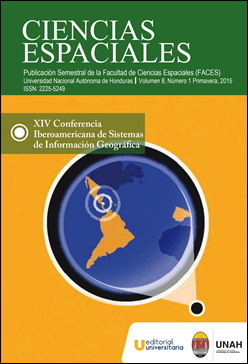Analysis of morphometric parameters and their relation to conditions of vulnerability in the Yungas ecoregion, Argentina
DOI:
https://doi.org/10.5377/ce.v8i1.2048Keywords:
Yungas - geomorphological parameters - Remote sensing - GIS-vulnerabilityAbstract
In the early twentieth century, the continental sector of Argentina (2,791,810 km2) was covered by about 100 million hectares of native forest area. This area was reduced to 33 million by the end of the century. Over the last 30 years the anual deforestation has noticeably increased. Part of the forest area is in Salta and Jujuy provinces, with about 5 million hectares representing critical environmental ecosystems for the regional biodiversity maintenance. The remote sensor data are a significant contribution for environment change evaluation. This work belongs to the Project: “Evaluation of changes in native forest areas and their relation with environmental vulnerabilities in subtropical Andean Forest ecoregion (Yungas) using radar – optical data fusion”. The aim of this study was to generate thematic inputs in order to use them for the development of environmental indicators related to the environmental vulnerability in this ecoregion. The selected area belongs to Ledesma department (Jujuy province) and is one of the two selected study sites to carry out this work. Geomorphological parameters were defined using Shuttle Radar Topography Mission (SRTM) images, which are freely available in the web. These parameters were useful to settle down certain variable behaviour. These results correspond to different thematic layers related to parameters such as analytical shading, slope, aspect, catchment area, moisture index, LS factor, watersheds delimitation and secondary hydric network. The integration of these parameters into a GIS system will contribute to the development of indicators related to environmental vulnerability in the under study area.
Revista Ciencias Espaciales, Volumen 8, Número 1 Primavera, 2015; 160-173
Downloads
1356




